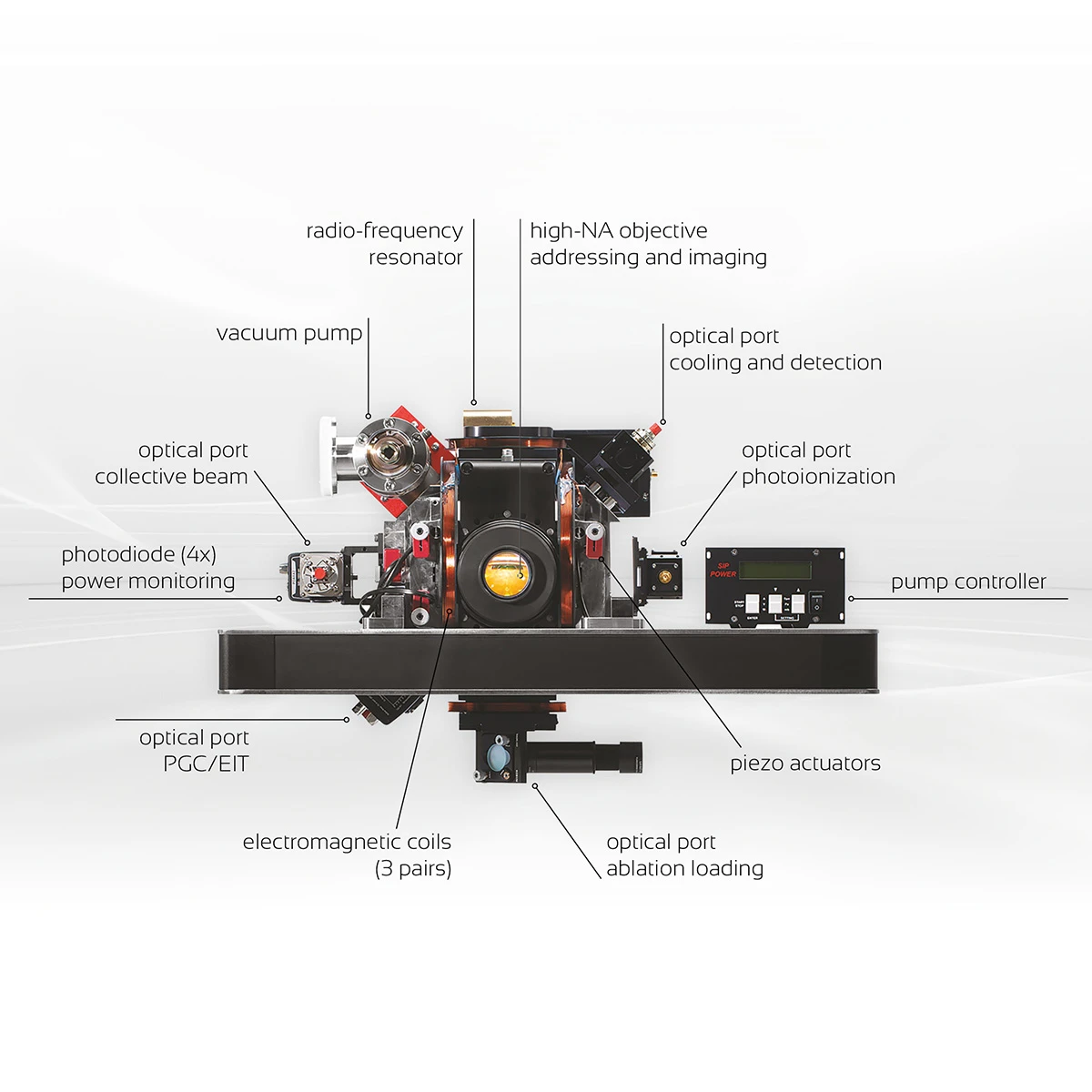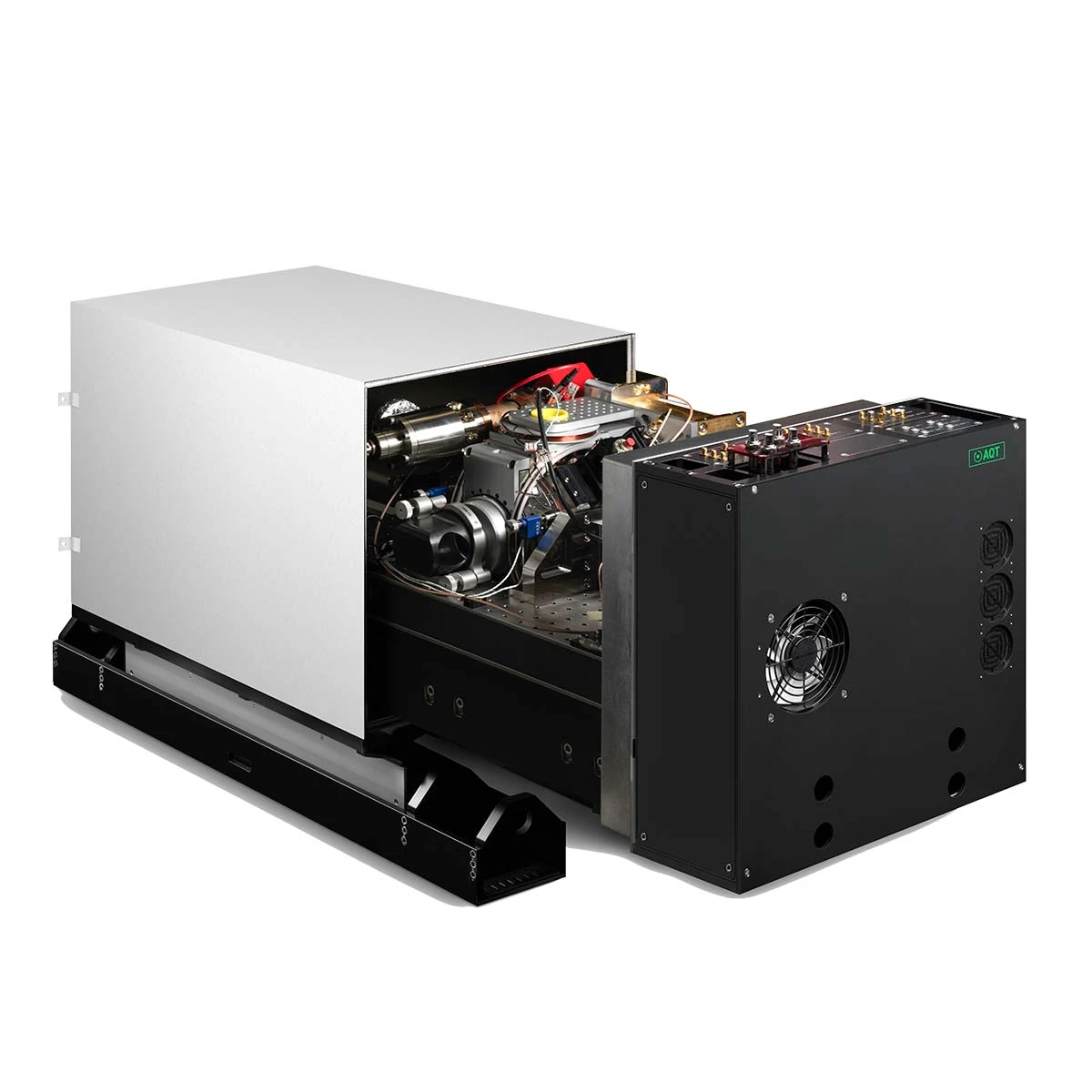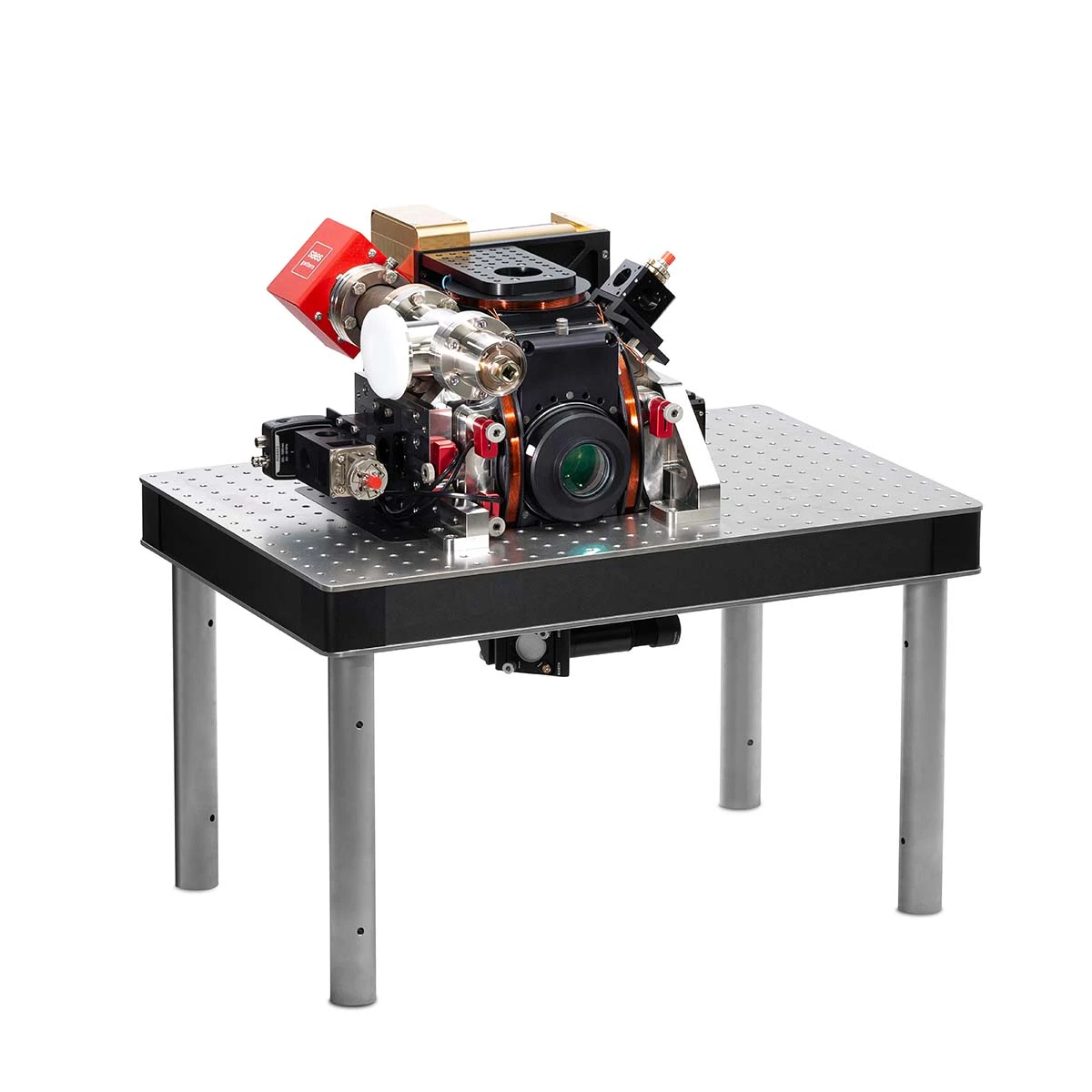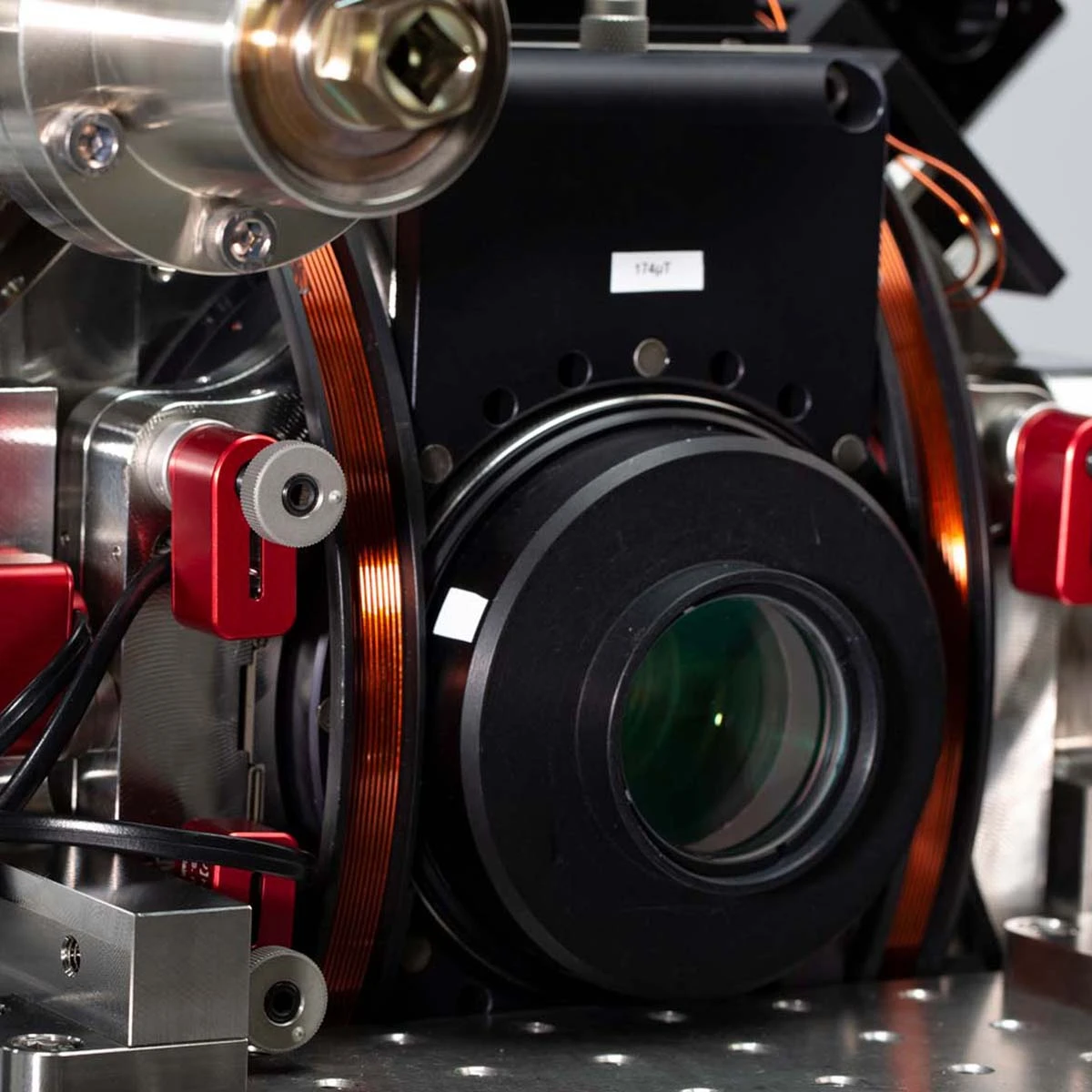Components
PINE SET-UP
Modular trapped ion architecture for your quantum applications.
The PINE SET-UP is a fully functional ion trap in a table-top size for the storage and manipulation of up to 50 qubits – perfect for the integration in a 19-inch rack or laboratory infrastructure.
pairs of permanent magnet assemblies
pairs of electromagnetic field coils
vacuum pumps
customer specific side ports

Out-of-the-box integration of a fully functionable, table-top size quantum processor into your system.
Make use of AQT’s leading quantum technology for your specific applications without the associated engineering and design overhead.
The PINE SET-UP is an assembly based on a modular approach. The heart of the set-up is our quantum processor unit, AQT’s PINE TRAP, a high-precision ion trap building upon the well tested design of the University of Innsbruck and the Institute of Quantum Optics and Quantum Information (IQOQI). The trap is located inside an ultra-high vacuum chamber facilitating a low background-gas collision rate of < 0.02 1/s. Easy optical interface for qubit manipulation, cooling and detection is provided via fiber ports. Single-qubit operations on a fault-tolerant level as well as fast detection can be implemented via the provided high-NA objective.
PINE SET-UP features
Pioneering experiments have already been carried out with the PINE SET-UP, as for example the demonstration of fault-tolerant universal quantum gate operations at University of Innsbruck, aqtion project. Use the PINE SET-UP to push your research applications.

Working with long ion strings.
The stability of the ion string during the operation is related to the vacuum pressure of the chamber. Elastic collisions mainly with H2 molecules can lead to melting events and therefore heating of the ion string. The PINE SET-UP features less than one collision with background gas particles per ion every minute.
High-NA optics
Our PINE SET-UP features the possibility to use a sophisticated objective, specially designed to compensate aberrations from the viewport, for single ion addressing as well as fast quantum state readout. The design of the objective mount allows the remote control of the objective tilt as well as the focal point. Addressing of single Ca ions out of a 20 ion string with less than 1% crosstalk error were achieved with the PINE SET-UP.

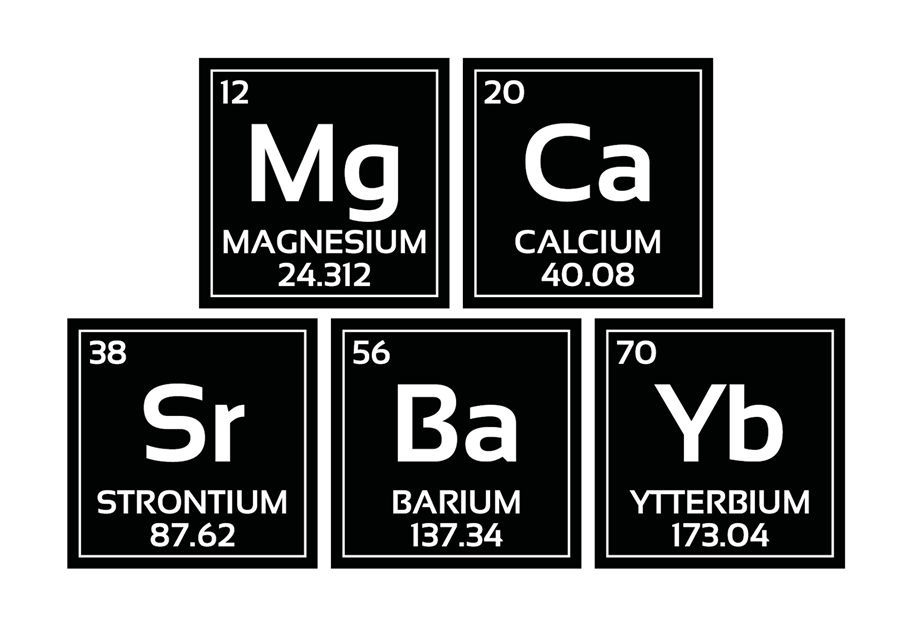
Work with your preferred ion species.
The PINE SET-UP is designed for ablation loading. The ion species can be selected by choosing the ablation target(s). For multi-ion species applications, we offer a target mount with two different ablation targets.
The PINE SET-UP enables you to directly work with your quantum register without the necessity of spending resources for the design and assembly of your own system. The PINE TRAP as the heart of the SET-UP is provided with a set of specifications. In addition, there is the possibility of the installation of the PINE SET-UP at your facility or laboratory by AQT engineers. If you are interested in the PINE SET-UP for your specific application, please contact AQT sales.
Specifications
| background-gas collision rate | < 0.02 1/s |
| NA of objective for addressing and readout | 0.6 |
| 4 optical fiber ports |
|
| Number of different possible species | 2 |
| Number of pairs of permanent magnet assemblies for the realisation of the main magnetic field. | 2 |
| pairs of electromagnetic field coils for the generation of additional B-field along each direction. | 3 |
| Vacuum pumps | • 1 x IG-pump • 2 NEG pumps |
| Trap flange viewport (customer specific) |
|
You might also like

